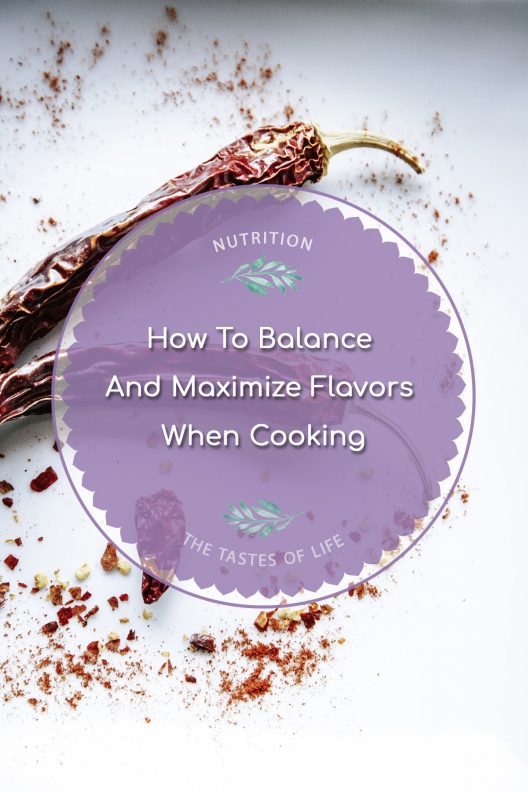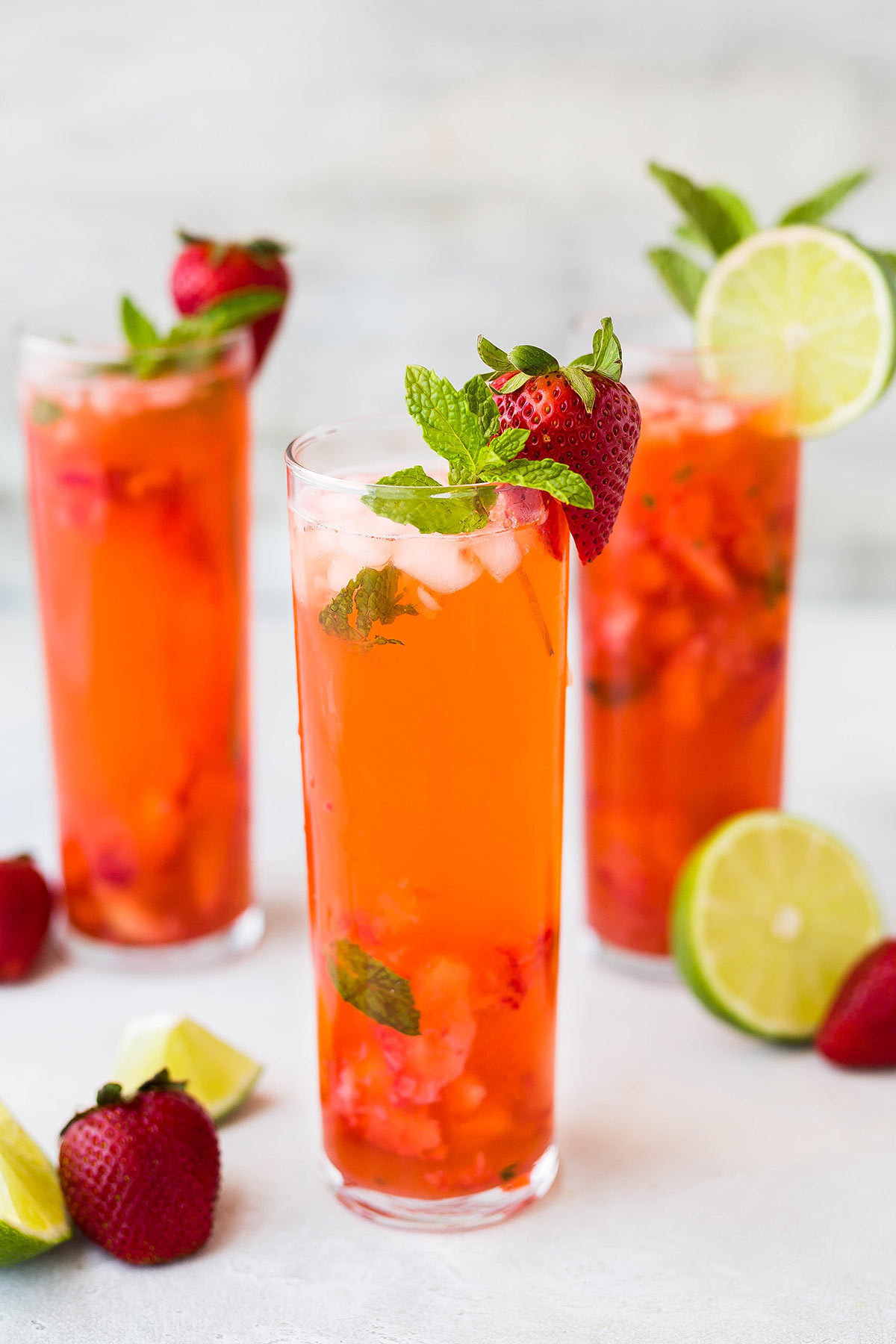How to Balance and Maximize Flavors When Cooking

Create A Balance Of Flavors When Cooking
What is your favorite, wonderfully flavorful dish?
Can you name all the spices and different contrasting flavors?
Combining and balancing flavors is such beautiful art and essential when you want to make wonderfully flavorful dishes!
It might take a little training, but in no time, your taste buds will know what you should do with your flavors and help you build or alter recipes with delight!
As a child, my job was to go from dish to dish in the kitchen and offer suggestions on combining flavors! They called me “little taster” – I was so young and had put my two cents into everything my family was cooking. Lol!
Combining and balancing flavors is prominent in Asian dishes. I love them and believe they are popular because they have such dynamic and vibrant flavors!
Let’s start with the building blocks for flavor balancing.
There are five “tastes” that work as the foundation for the flavors in each recipe: sweet, salty, sour, bitter, salty, and umami. By the end of this blog, you will know how to balance your foods’ flavor and use them efficiently. Depending on the recipe, some of the flavors will be more dominant than others. The knowledge on how to use these flavors will help you to be more self-confident and more comfortable cooking without a recipe.
Each flavor can be used to balance the others, offsetting or counteracting intense flavors to offer layers of harmonious tastes. For example, prunes (sweet) are added to Polish hunter stew, which is sour. The prunes balance the stew and give the dish a more vibrant flavor.
Depending on your goals, flavor profiles can be balanced as follows:
- Sweet can be balanced with Sour Fat, Spicy, Salty or Bitter.
- Salty can be balanced with Sweet, Fat, or Sour.
- Pungent/Spicy can be balanced with Fat, Sour, or Sweet.
- Acid/Sour/Tart can be balanced with Sweet, Bitter Fat, Sweet or Salty.
- Bitter can be balanced with Salty, Sour, or Sweet.
- Fats can be balanced with the Sour and addition of ingredients.
Adding just a touch of any new flavor amplifies the others.
When you are making a dish or soup, for example, and you feel like something is not right or something is missing, you can add a little bit of apple cider vinegar or lemon juice in the end it will bring out the flavor and make the soup tastier. Hint: think about dark chocolate with sea salt; that light addition of saltiness amplifies the sweetness of the chocolate.
When your dish is bland, it is usually under-flavored. Don’t be afraid to add flavor to your dish! If you mess up, you will know for next time, but play, play, play with it!
Now let’s learn more about each of our five flavors.
Umami/ Savory
Umami is an earthy, meaty, and savory flavor. It is naturally occurring and can be developed in foods through slow cooking, drying, and curing.
Although it can be confused with saltiness, umami is a taste category of its own. It is known for contributing depth to food that salt can’t necessarily provide by itself, even though they share many of the same properties.
Umami is best used to balance a dish when something seems to be missing or when it just doesn’t seem complete. (It’s definitely a secret ingredient!)
Salty
Salt is a flavor enhancer, so adding a bit of salt to a dish recipe isn’t just about adding saltiness; it will enhance the flavor and balance unwanted bitterness in a dish.
Here are where this flavor is dominant: Arugula, Feta, Beans, Egg, Lamb, Anchovies, Tacos, Soy sauce, Seaweeds, Miso, Pickled vegetables, Bacon, Hard cheeses, Tomatoes, and Mushrooms.
What do you do when there is too much salt in the dish? – add more water or sweet flavors like honey, sugar, balsamic vinegar, coconut sugar, or maple syrup.
You can use sea vegetables, soy sauce, bacon, cured meat, olives, anchovy, bacon, stock, or cheese instead of salt to achieve a salty flavor.
Bitter
Humans are generally sensitive to bitter flavor and don’t like it as much as other flavors, so we don’t usually want to add a bitter flavor to our recipes. Bitter flavors (evolution-wise) cue us to think the plant can be inedible. On the other hand, bitter foods are incredibly good for your digestion and can balance your blood sugars.
You’ll get natural bitters from these foods: Dark Leafy Greens, Brussels Sprouts, Radicchio, Dandelion Leaves, Cacao, Endives, Cacao, Grapefruit, Bitter Melon, Grapefruit, Horseradish, and Arugula.
Is the dish too bitter? To enjoy the bitter flavor, add salt, sweet or sour.
Sweet
The sweet flavor is not just for dessert! Sweet favors balance sour, spicy, and bitter, so if you have dishes or ingredients with any flavor profiles, add a bit of sweetness to create something even more delicious and complex. Sweetness usually gives the dish a deeper flavor.
My favorite combination is sweet and salty or sweet and sour!
Here is where this flavor is dominant: Honey, Coconut Sugar, Stevia, Maple Syrup, Molasses, Yacon, Balsamic Vinegar, Fruits, Coconut Flesh or Water, Veggies (carrot, sweet potatoes, beets, squashes, corn, parsnip, fennel, celery root or sugar snaps).
Too much sugar in the dish? Add some sour ingredients: lemon juice & vinegar – they will cut through and brighten the sweetness.
You can use sweets to balance bitters.
Sour
I think this flavor has the least number of fans. But it is my favorite! Even a tiny addition of a sour taste can bring a bland dish alive. Sour balances spice and sweetness. That is why we add sour cream to the soup and stews or yogurt to the curry or stew. Sour will counteract that heat, creating a new balance of flavors.
Here is where this flavor is dominant: Lime Juice, Orange Juice, Lemon Juice, Vinegar, Tomato Paste, Pickled Vegetables, Sour Cream, Sauerkraut, Kefir, Yogurt and Tomatoes.
When your dish is too sour, add a bit of sweetness to balance the dish.
Play with these combinations & enjoy your new creations!
Leave a comment and let me know YOUR favorite combination of flavors.
Do you want to know more? Book a session here: https://calendly.com/thrivinghormones-llc/15-minute-free-consultation
Please feel free to comment or ask any questions below. Share the blog on Instagram with the hashtag #thetastesoflifeholisticblog .
Yum





